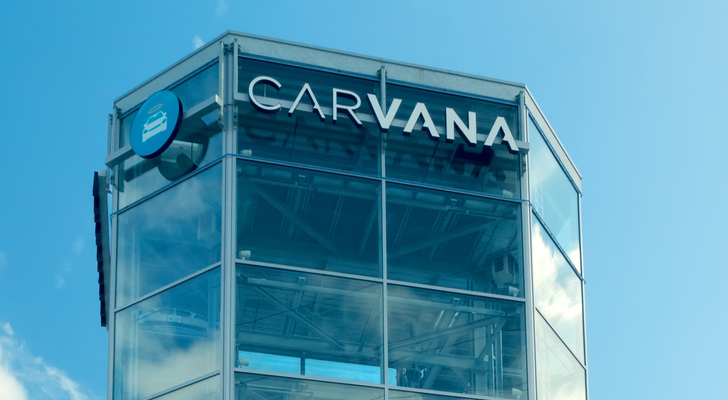It’s hard to even know where to begin when detailing the difficulties surrounding Carvana’s (NYSE:CVNA) stock.
First of all, the company has legal issues to deal with in Michigan and Pennsylvania. Additionally, the U.S. Federal Reserve will probably continue to raise interest rates. These difficulties should cause prospective investors to think twice about buying CVNA stock.
To put it simply, Carvana operates an e-commerce platform for purchasing and selling vehicles in the U.S. Now, you might assume that this should be a high-conviction business model. After all, most people need a car and everybody likes a bargain, right?
Yet, customers might choose to put off buying a vehicle if the conditions are unfavorable. This will likely be the case for the remainder of 2022 and into 2023, and Carvana’s problems are very likely to get worse, not better.
| CVNA | Carvana’s | $15.64 |
What’s Happening with CVNA Stock?
We’d hate to call CVNA stock a ten-car pileup, but there’s really no better way to describe the price action. The shares cost over $50 apiece just a couple of months ago but were recently spotted trading for just $15 and change.
Before you decide that Carvana could be the turnaround story of the year, consider the glaring red flags. For example, Truist analyst Naved Khan recently observed that macro-level trends, including elevated inflation and supply chain constraints, “have continued to put pressure on the auto industry as a whole.”
Here are a couple more red flags to bear in mind. First, a Carvana dealership in Michigan was reportedly “shut down due to violations of state law,” with Carvana characterizing its legal transgression as a “technical paperwork violation involving title and transfer issues.”
That’s not Carvana’s only legal problem, by the way. The company also has to deal with a class-action lawsuit in Pennsylvania, reportedly pertaining to “alleged late vehicle registrations.”
The Federal Reserve Will Make It Hard for Carvana to Succeed
On top of all those issues, Carvana currently has to deal with a Federal Reserve that’s aggressively hiking interest rates. Some consumers, without a doubt, are already cutting back on purchases as a result of elevated inflation. Now, they’ll be even less likely to purchase a vehicle as they’ll probably have to pay a higher interest rate on a loan.
When he reduced his price target on CVNA stock, Khan seemed to refer to this problem. He wrote that Truist Securities analysts “have seen reduced affordability tempering consumer demand for autos and contributing to softness in pricing.”
Khan didn’t directly mention interest rate hikes here. However, there’s little doubt that the Federal Reserve’s aggressiveness is a contributing factor. So far in 2022, the central bank has raised interest-loan rates from 3% to 3.25%.
Moreover, the Federal Reserve seems intent on raising the federal funds rate to 4.6% in 2023. This suggests further upward pressure on auto-loan interest payments for consumers, which won’t help Carvana at all.
What You Can Do Now
It won’t be easy for Carvana to thrive when the nation’s central bank is making it more expensive to take out an auto loan. This, along with high inflation and supply-chain disruptions, are all problems that Carvana will have to deal with.
Plus, there are the legal situations in Michigan and Pennsylvania to contend with. It’s just one difficulty after another for Carvana, and you can make your life easier by simply steering clear of CVNA stock.
On the date of publication, neither Louis Navellier nor the InvestorPlace Research Staff member primarily responsible for this article held (either directly or indirectly) any positions in the securities mentioned in this article.
